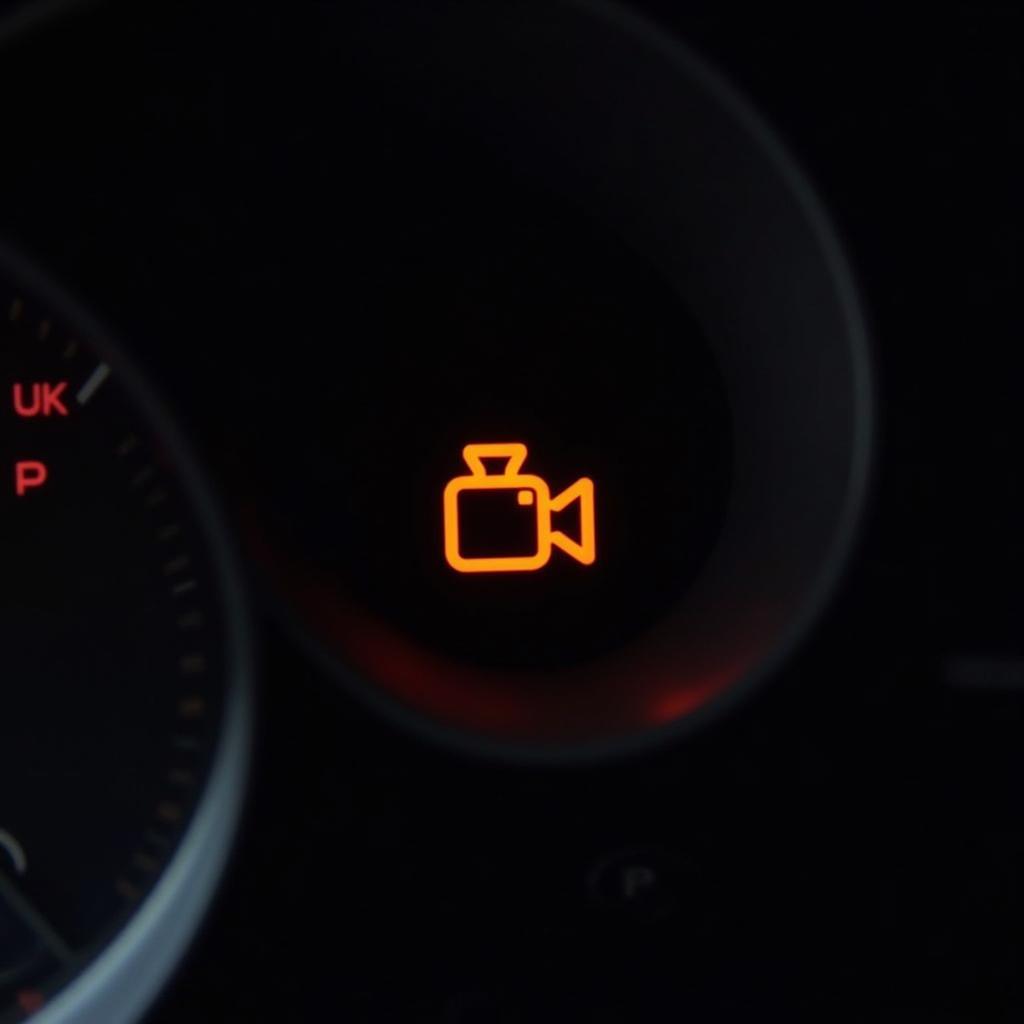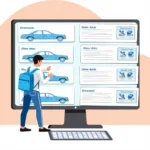Car diagnostic signs are crucial indicators of potential problems within your vehicle’s complex systems. Recognizing and interpreting these signs can save you time, money, and potentially prevent serious damage down the line. From the ubiquitous check engine light to more subtle indicators like unusual noises or performance changes, understanding these signs is the first step towards a proper diagnosis and repair. This guide will equip you with the knowledge to identify and address various car diagnostic signs, empowering you to take control of your vehicle’s health.
Understanding what your car is trying to tell you is essential for maintaining its optimal performance and longevity. While some signs might seem minor, they could be hinting at underlying issues that require immediate attention. Ignoring these warnings could lead to more costly repairs in the future. For example, a slight hesitation when accelerating might be a symptom of a failing fuel injector, a problem that can quickly escalate if left unchecked. This comprehensive guide will cover everything from the basics of car diagnostics to more advanced topics, ensuring you’re prepared to handle any warning your vehicle throws your way. After reading this article, you will be able to diagnose car problems like a pro.
There are various ways to access car diagnostic information, including using a car heads up display diagnostic port. This convenient tool can project vital information directly onto your windshield.
Common Car Diagnostic Signs
Several common car diagnostic signs can indicate a problem. Being aware of these signs can help you catch issues early.
- Check Engine Light: This is arguably the most well-known car diagnostic sign. It can illuminate for a variety of reasons, from minor issues like a loose gas cap to more serious problems such as engine misfires or catalytic converter malfunctions. Never ignore this light.
- Unusual Noises: Pay attention to any unusual sounds coming from your car. Grinding, squealing, knocking, or hissing can all be signs of mechanical problems. For instance, a squealing noise when braking could indicate worn brake pads.
- Performance Changes: Noticeable changes in your car’s performance, such as decreased fuel efficiency, difficulty starting, rough idling, or hesitation when accelerating, should be investigated. These changes can point to problems with the engine, transmission, or other crucial systems.
- Fluid Leaks: Check regularly for fluid leaks under your car. Different colored fluids can indicate different problems. For example, a green leak could suggest a coolant leak, while a red leak might be a transmission fluid leak.
- Smoke: Excessive smoke from the exhaust can also be a warning sign. Blue smoke could indicate burning oil, while black smoke might mean the engine is burning too much fuel. White smoke could signify a coolant leak into the engine.
Diagnosing the Problem: Tools and Techniques
Now that you’re familiar with common car diagnostic signs, let’s explore how to pinpoint the exact issue. Modern cars are equipped with sophisticated onboard diagnostic systems (OBD) that can provide valuable insights.
Using an OBD-II Scanner
An OBD-II scanner is a valuable tool for diagnosing car problems. This device plugs into your car’s OBD-II port, usually located under the dashboard near the steering wheel. It can read diagnostic trouble codes (DTCs) stored in the car’s computer, providing clues about the source of the problem. A good OBD-II scanner can also display live data from various sensors, allowing you to monitor the performance of different systems in real-time.
Knowing more about diagnostic assessments is crucial. Learn more about what is diagnostic assessment for cars.
Visual Inspection
A thorough visual inspection is an essential first step in car diagnostics. Carefully examine the engine compartment, looking for any loose connections, damaged wires, or leaking fluids. Check the condition of belts, hoses, and other components. Also, inspect the underside of the car for any signs of damage or leaks.
Seeking Professional Help
While you can diagnose some car problems yourself, there are times when it’s best to seek professional help. If you’re unsure about the cause of a problem, or if the issue is complex, it’s always a good idea to consult a qualified mechanic. They have the expertise and specialized tools to diagnose and repair even the most challenging car problems. Furthermore, you might be interested in exploring the best laptop for car diagnostics for professional use.
Preventing Future Problems: Regular Maintenance
Regular maintenance is crucial for preventing car problems and extending the life of your vehicle. Following the manufacturer’s recommended maintenance schedule is essential. This typically includes regular oil changes, filter replacements, fluid checks, and inspections.
“Preventive maintenance is always better than reactive repairs,” says John Smith, a seasoned automotive technician with over 20 years of experience. “Regular check-ups can catch potential problems early, before they become major headaches.”
Conclusion: Staying Ahead of Car Troubles
Understanding car diagnostic signs and taking appropriate action is essential for keeping your vehicle in top condition. By paying attention to warning signs, utilizing diagnostic tools, and performing regular maintenance, you can stay ahead of potential car troubles and avoid costly repairs. Remember, a well-maintained car is a safe and reliable car. Don’t ignore those car diagnostic signs – they’re your car’s way of asking for help!
Are you considering starting a car diagnostic business? Check out the oppeetunity to open car diagnostic business in n.z for some valuable insights. Also, if you are looking for a specific diagnostic tool, take a look at the car diagnostic tool memo scanner u281.
FAQ
- What does a flashing check engine light mean?
- How often should I get my car diagnosed?
- Can I use any OBD-II scanner on my car?
- What are the most common causes of a check engine light?
- How can I reset my check engine light?
- What should I do if my car is making a strange noise?
- Is it safe to drive my car with the check engine light on?
Need more help with car diagnostics? Contact us via WhatsApp: +1(641)206-8880, or email: [email protected]. Our 24/7 customer support team is always ready to assist you.


